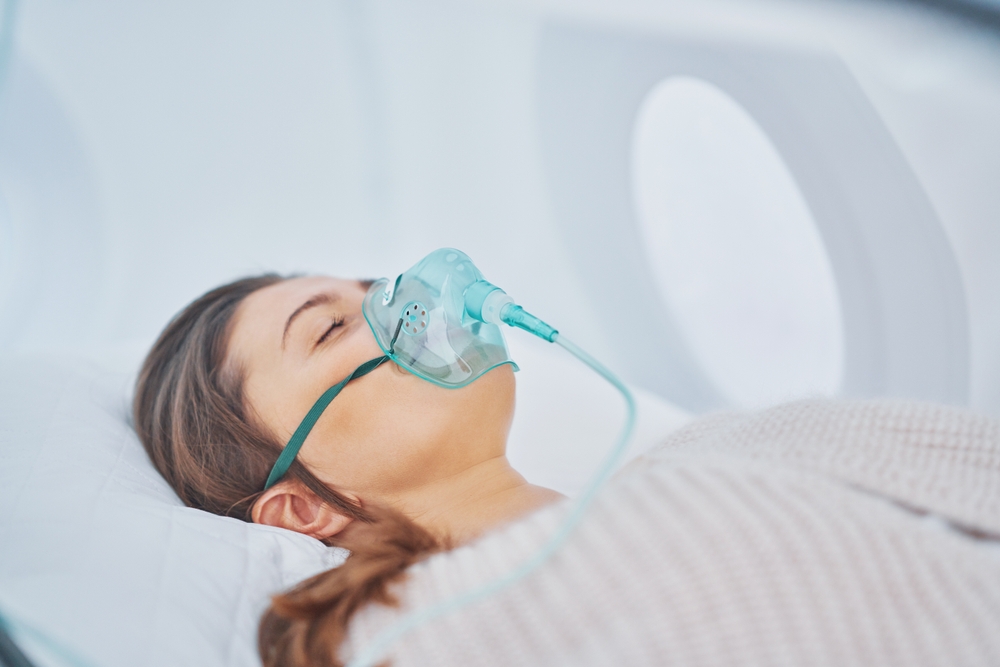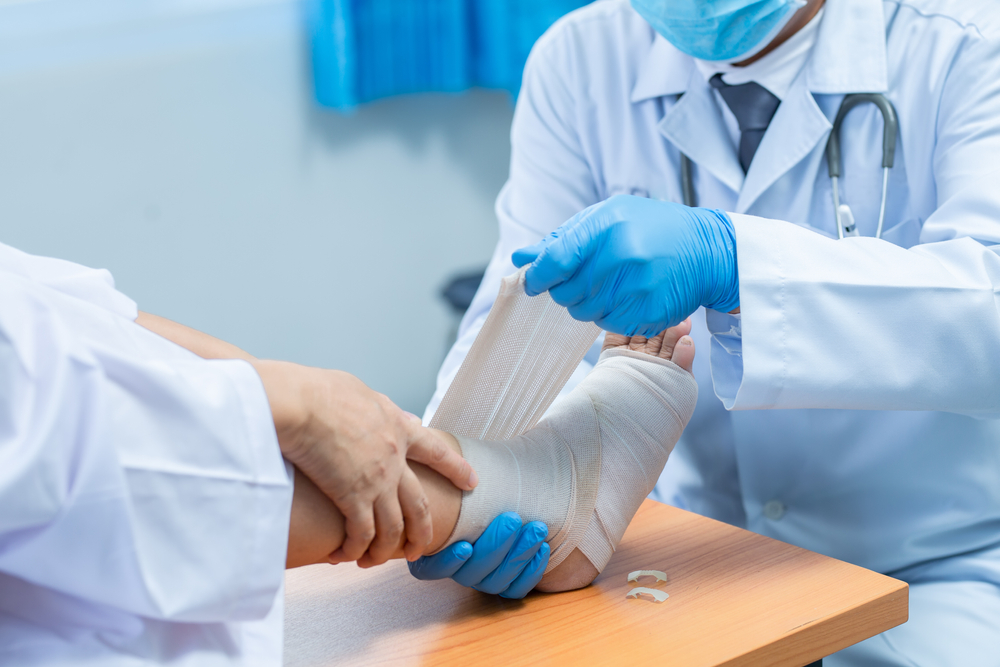Hyperbaric Oxygen Therapy (HBOT)
Hyperbaric Oxygen Therapy (HBOT)
Discover advanced, non-invasive wound healing with hyperbaric oxygen therapy at Innovative Wound Care Specialists.
Hyperbaric Oxygen Therapy FAQ
About HBOT Therapy
How Does Hyperbaric Oxygen Wound Therapy Work?
Hyperbaric oxygen wound therapy is like giving your body a boost of oxygen. During the treatment, patients sit or lay down in a special chamber where the air pressure is higher than normal breathing in pure oxygen.
This combo helps your blood carry more oxygen than normal from just breathing regular air. The extra oxygen encourages the release of stem cells and growth factors, and even helps fight certain types of bacteria. As a result, it boosts your body’s natural healing processes.
What Conditions Can Be Treated with Hyperbaric Oxygen Therapy?
HBOT, or hyperbaric oxygen therapy, can treat a variety of conditions. The treatment is effective for infections like osteomyelitis and necrotizing fasciitis, non-healing wounds, radiation injuries, carbon monoxide poisoning, decompression sickness, and more. In fact, there are more than a dozen different conditions that have been approved for treatment.
What Happens During a Consult for Hyperbaric Oxygen Therapy?
When you go in for a consultation, you will have an open conversation with a hyperbaric physician. They’ll ask about your medical history and give you a physical exam to see if HBOT is right for you. Then, a respiratory therapist will come in and go over the treatment plan details, when you’ll have sessions, and any risks to keep in mind. If you have a wound that won’t heal, they may take some pictures to keep track of how it does over time.
What Evidence Exists to Support the Effectiveness of Hyperbaric Oxygen Therapy in Treating Chronic Wounds?
Patients who undergo an appropriate number of HBOT sessions for chronic wound treatment are likely to see positive effects from this form of therapy. Consistency is most often key in seeing effectiveness from HBOT.
How Does HBOT Assist with Crush Injuries and Suturing of Severed Limbs?
HBOT can treat severe trauma to limbs by increasing oxygen saturation in the blood and tissues, which works together to promote healing and decrease the need for amputation.
About the Treatment Procedure
What Occurs During a Hyperbaric Oxygen Therapy Treatment?
Before your treatment, you will be given a hospital gown or scrubs to change into. You may also be asked to remove hair and skin products that contain petroleum, because those products can create a fire hazard in oxygen-rich environments.
During a hyperbaric oxygen therapy treatment, they will pressurize the chamber you’re in. Some describe it as feeling similar to being in an airplane or at high elevation. Next, you will start breathing in 100% pure oxygen. At the end of the session, they will decrease the pressure and you can step out of the chamber.
The session length is around 60 to 120 minutes, depending on your condition. The number of treatments will also depend on the severity of your condition. It may be anywhere from a few treatments to several dozen.
What Must a Patient Do to Prepare for Treatment?
To get ready for treatment, there are a few things patients should keep in mind. First off, make sure to tell the team about any medications you’re taking. If you’re feeling under the weather with a cold or flu, it’s important to let them know.
Smoking counteracts the benefits of HBOT, so if you smoke, you may be asked to stop smoking two weeks prior to your treatment course. Your healthcare provider also reserves the right to test for nicotine if they suspect you are smoking during the course of your treatment. If the test results are positive for nicotine, they may discontinue treatment.
Also, skip any cosmetics with flammable ingredients like petroleum, wear the comfy scrubs they provide, and bathe beforehand.
How Many Treatments are Needed, and How Often?
How many treatments and how often you need them depends on your condition. Usually, you’ll do one treatment a day from Monday to Friday. The number of treatments range anywhere from three to forty or more. HBOT is typically part of a holistic treatment plan which may include additional therapies and medicines
Are There Any Side-Effects of Hyperbaric Oxygen Therapy (HBOT)?
Generally, patients experience no side-effects. Some may have ear popping or slight fatigue, but these are usually temporary.
Is Hyperbaric Oxygen Treatment Painful?
Hyperbaric oxygen treatment is usually painless. Sometimes, patients might feel their ears getting a bit full, kind of like when you’re on a plane, and your ears pop. But don’t worry, the staff will teach you some tricks to manage ear popping, like yawning or swallowing, so you can stay comfortable during the treatment.
What Will the Patient Feel During the Treatment?
During the treatment, patients might hear the sound of air circulating and feel some changes in pressure. You might also notice your ears popping a bit, which is totally normal. But the treatment will give you downtime, so feel free to relax, take a nap, catch up on reading, or watch a movie.
Wound Healing with HBOT
Who is Considered a Candidate for HBOT?
Patients with specific illnesses or injuries, such as non-healing diabetic ulcers or bone infections, may qualify for HBOT after evaluation by a certified physician.
How Long Does it Take to Heal a Wound?
The time required for a wound to heal varies depending on the type and severity of the wound. We will provide you with an estimate during your initial appointment. Various factors such as your overall health, adherence to care plans, and lifestyle choices may influence your healing process.
Can I Do Anything at Home to Help My Wound Heal Faster?
Yes, following our care instructions, maintaining good nutrition, staying hydrated, and avoiding activities that may strain the wound can contribute to faster healing. Our team will provide personalized advice based on your specific situation.



